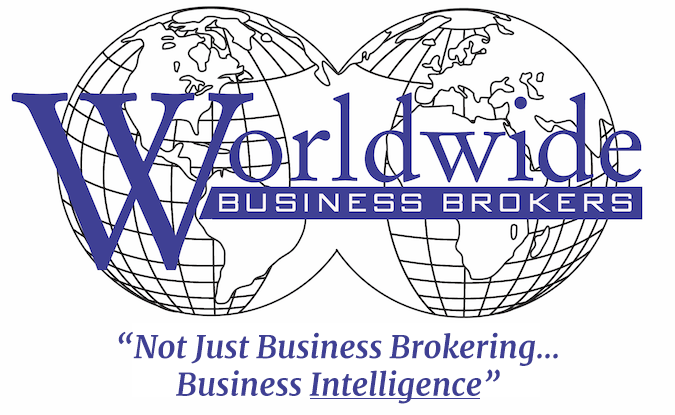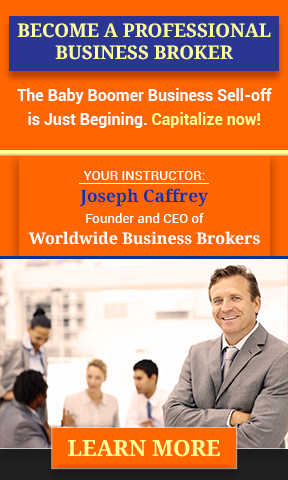12 February 2024: Valuing a Business – Assets
Valuing a business is arguably the most important aspect of selling one and knowing how to do so, the most important bit of knowledge one must have if one plans to broker businesses; or sell their own business; or insure the lives of the owners of a business; or want to know if the lifestyle they plan to live after selling can be supported by the proceeds of the sale. This is why we’ve spent the last few weeks discussing business valuation.
Our first post in this series was a high-level view of four or five methods that are used to determine a businesses value. We’ve since discussed in greater detail the comparables and earnings methods used when valuing a business. In this post, we look at asset values.
__________________________________________________________________________________
Our February (15th) Live Stream in The Brokers Roundtable℠ will feature an interview and Q&A with Scott Doering, a founding Member of The Brokers Roundtable℠ and recipient of the Worldwide Business Brokers “Course Certified” badge, discussing his first-hand experience dealing with a private equity firm as a potential buyer for a business he’s been engaged to sell. Exact date will be posted to Announcements and Community Events.
If you’re not yet a Member of The Brokers Roundtable℠, you can find out about such future events and what other benefits Members enjoy here.
___________________________________________________________________________________
 Assets are the “things” – tangible and intangible – that a business owns. Such “things” include everything from vehicles, equipment, real estate and office furniture to trademarks, inventory and the business’ website. Assets are the “things” that, in the hands of the business’ owners and employees, generate the earnings of the company.
Assets are the “things” – tangible and intangible – that a business owns. Such “things” include everything from vehicles, equipment, real estate and office furniture to trademarks, inventory and the business’ website. Assets are the “things” that, in the hands of the business’ owners and employees, generate the earnings of the company.
The thing about assets is that their purpose is to generate an amount of earnings the value of which is more than the assets’ value because when it comes to selling a business, the business has to be worth more than the assets or you would just sell off the assets.
The primary value of any profitable business is based on its earnings.
__________________________________________________________________________________
Courses! Courses! Courses!
Many of you have asked if our Flagship Course, “Learn How to Value and SUCCESSFULLY Sell Businesses“, could be made available on a module-by-module basis. Instead of enrolling in the complete course, could you enroll only in the module(s) you wanted? We’re happy to report that this is now possible.
We’ve broken our Flagship into six separate modules (or module groups) to give you all the flexibility you need to learn only what you want to learn – and we’ve moved them all over to the new Brokers Academy in The Brokers Roundtable℠ . The Flagship is still available but the modules are now available individually.
You don’t need to be a Member of The Brokers Roundtable℠ to access any of these courses but if you are, you’ll receive a 20% discount on any course you enroll in. If you’re not yet a member of The Brokers Roundtable℠, you can learn more – and get access to all the talent and resources – here.
___________________________________________________________________________________
I mean, think about it.
If the earnings of the business are worth $1 million and the assets are worth $1.5 million, why waste time trying to sell the business when the assets can be sold much more quickly and for much more money?
One of our colleagues in the western U.S. found himself in a similar situation not long ago and the challenge he faced is the basis of one of the lectures in our Flagship Course, “Learn How to Value and SUCCESSFULLY Sell Business”, as well as our Course #104: “How to Value a Business”.
Here’s the Story.
Asset Value vs Business Value
 It started with an email with the following question: “If the business I’m engaged to sell is valued at $850,000 and the equipment that the business owns is also valued at $850,000, how do I advise the owner on what to do?”
It started with an email with the following question: “If the business I’m engaged to sell is valued at $850,000 and the equipment that the business owns is also valued at $850,000, how do I advise the owner on what to do?”
You can probably see the problem.
Our fiduciary responsibility is to our client which, as was the situation in this case, is almost always the business owner. Our job is to get our client the most value for what they’re selling in the shortest period of time. But the business owner may have objectives that conflict with what our normal course of business would be and, in such circumstances, we may have to consider some options. The important thing to remember is that we have to outline the options; make sure our client understands them.
_____________________________________________________________________________________
Our course, “Learn How to Value and SUCCESSFULLY Sell Businesses“, teaches you how to accurately value and successfully sell businesses.
What we advised our colleague in this case was that, aside from growing the business to achieve greater value, there seemed to be two options for the client:
- Sell the business (which includes the assets)
- Sell the assets (and close the business)
The next issue was how to lay the options out to the seller; how to explain them. In this particular example, that explanation went like this.
With the refrain that “…our job is to get our client the most value for what they’re selling in the shortest period of time” top of mind, we explained that selling a properly-price business generally takes between six and 12 months of effort. Assuming the business was sold for its value of $850,000 and further assuming the broker’s commission is the standard 10%, the owner would net roughly $765,000 at the end of the selling effort – call it nine months.
On the other hand, selling the assets for their value of $850,000, the seller would theoretically net $850,000 and in far less time – 60-90 days?
Assets: TWO Values?
But hold on there, Bucko! Let’s look at this a little more closely. In the realm of business ownership transfers, physical (tangible) assets have TWO values: “In-place” value and “Relocated” value and when valuing a business in a situation such as our example knowing the difference is extremely important.
In-place value is meaningful in a situation where a buyer is going to use the assets where they are. In this case, $850,000.
Relocated value must be considered if the buyer is going to relocate the assets before using them.
In the case of our colleague’s dilemma, his client was a small manufacturer of metal components located in Colorado, U.S. If the eventual buyer planned to use the assets in the facility where they’re currently located and set up, those assets would seemingly be worth $850,000, their appraised value. However, if the buyer was headquartered in Texas and planned to move the acquired assets to the new extension that was just added on to their existing factory, there’s a new set of calculations that must be considered.
 First, the equipment must be disassembled, crated up and loaded on to trucks. It then must be hauled from Colorado to Texas where it will be unloaded and moved into the new factory addition. Then it has to be un-crated, reassembled and brought back into service.
First, the equipment must be disassembled, crated up and loaded on to trucks. It then must be hauled from Colorado to Texas where it will be unloaded and moved into the new factory addition. Then it has to be un-crated, reassembled and brought back into service.
Neither we nor our colleague would venture to guess what this relocation would cost but this had to be explained to the seller. But to finish the example, if the process of breaking down the equipment in Colorado, trucking it to Texas and reassembling it cost $150,000, the relocated value of the assets would be roughly $700,000.
To get a little further into the weeds on this, the time value of money might be something to consider. That is, what would having the value of the equipment in hand in 90 days be worth rather than waiting nine months for the value of the business?
The answer to that question might depend on what the seller planned to do next. Does the seller need that capital immediately? If so, this makes their decision easier.
The Bottom Line
Valuing a business is critical when considering selling and an important talent to have on the team when selling discussions begin to take place. As a rule, the value of a business’ assets is exceeded by the value of the earnings generated by those assets. If you’re valuing a business and realize that’s not the case, it might be a situation where the assets are under-utilized or there might be some other problem or issue impacting the business.
But if the owner of the business cannot find a way to make the assets more efficient or productive, it might be wise to consider selling the assets and closing the business.
I’d like to hear from you. What topics would you like me to cover? How can we tailor these posts to be more useful to you and your business. Let me know in the comments box, below, or email me at jo*@*******************og.com.
If you have any questions or comments on this topic – or any topic related to business – I’d like to hear from you. Put them in the comments box below. Start the conversation and I’ll get back to you with answers or my own comments. If I get enough on one topic, I’ll address them in a future post or podcast.
I’ll be back with you again next Monday. In the meantime, I hope you have a safe and profitable week.
Joe
Searching For…
NOTE TO READERS: Our “Searching For…” feature has been moved to our online community, The Brokers Roundtable℠. It will appear there exclusively from now on.

#business #businessacquisition #sellabusiness #becomeabusinessbroker #businessbrokering #businessvaluation #MergersandAcquisitions #buyabusiness #sellabusiness #realtor #realestateagents
The author is the founder, in 2001, of Worldwide Business Brokers and holds a certification from the International Business Brokers Association (IBBA) as a Certified Business Intermediary (CBI) of which there are fewer than 600 in the world. He can be reached at jo*@*******************og.com

